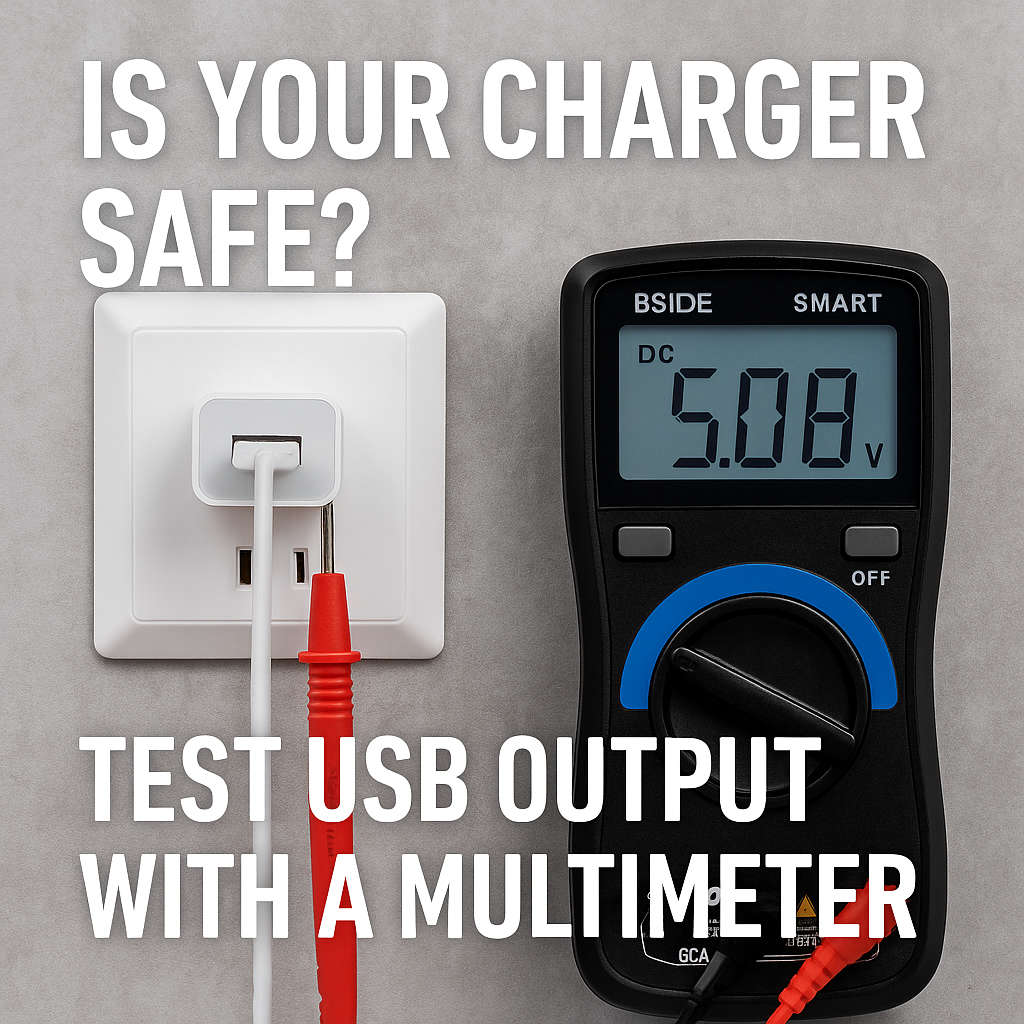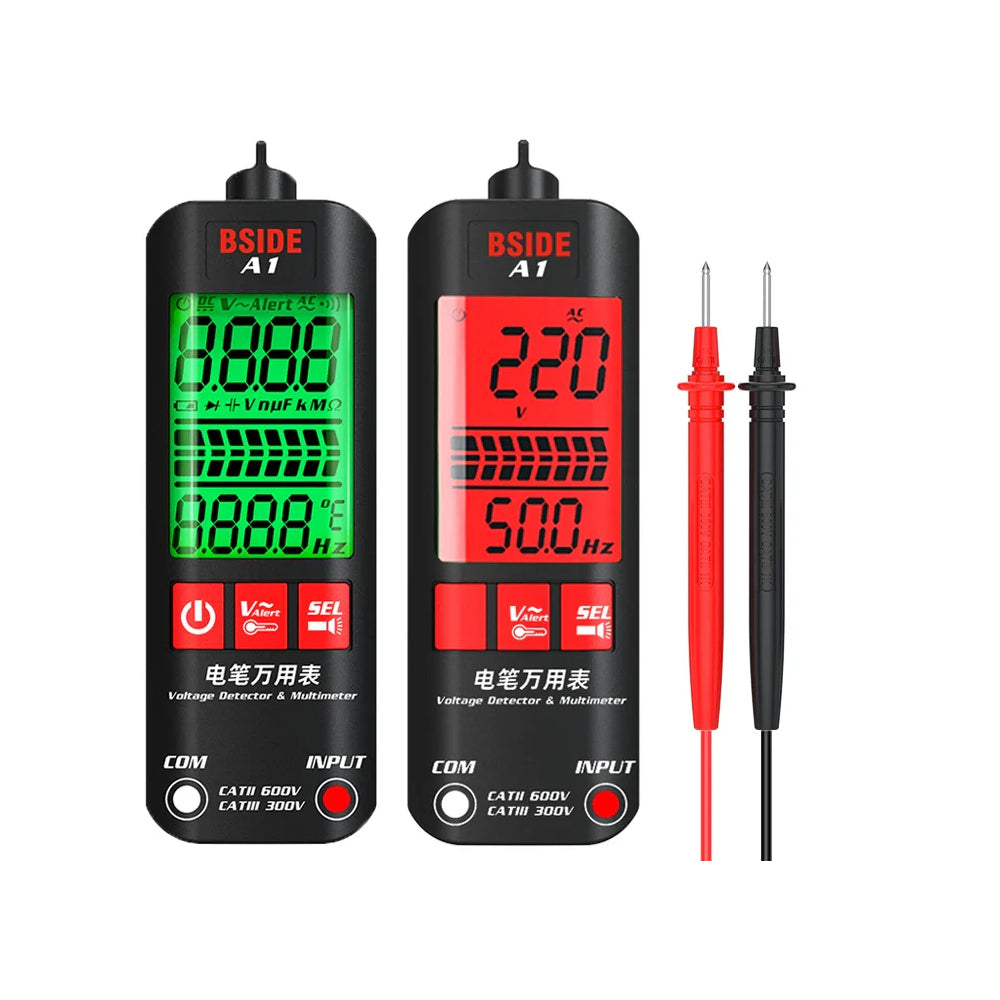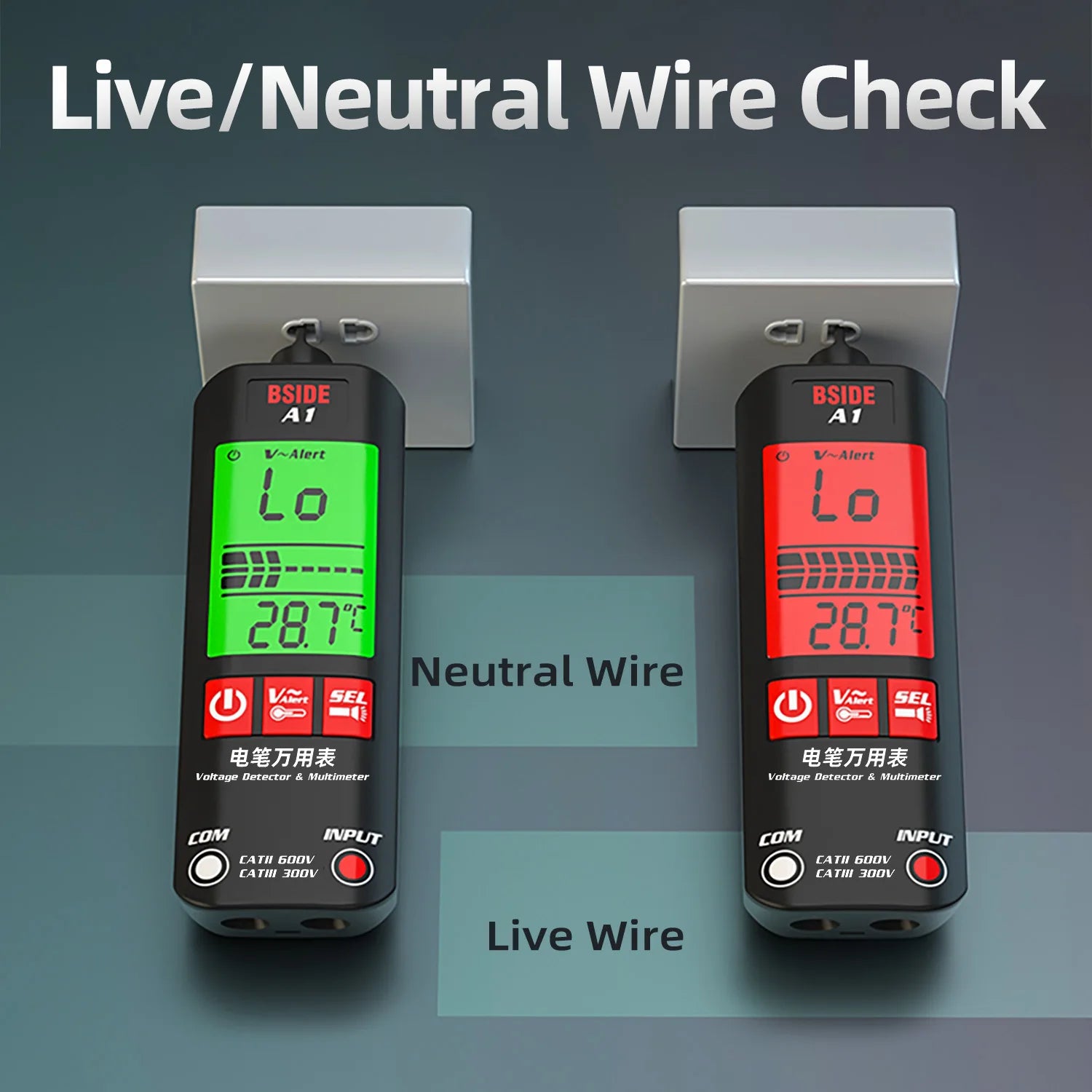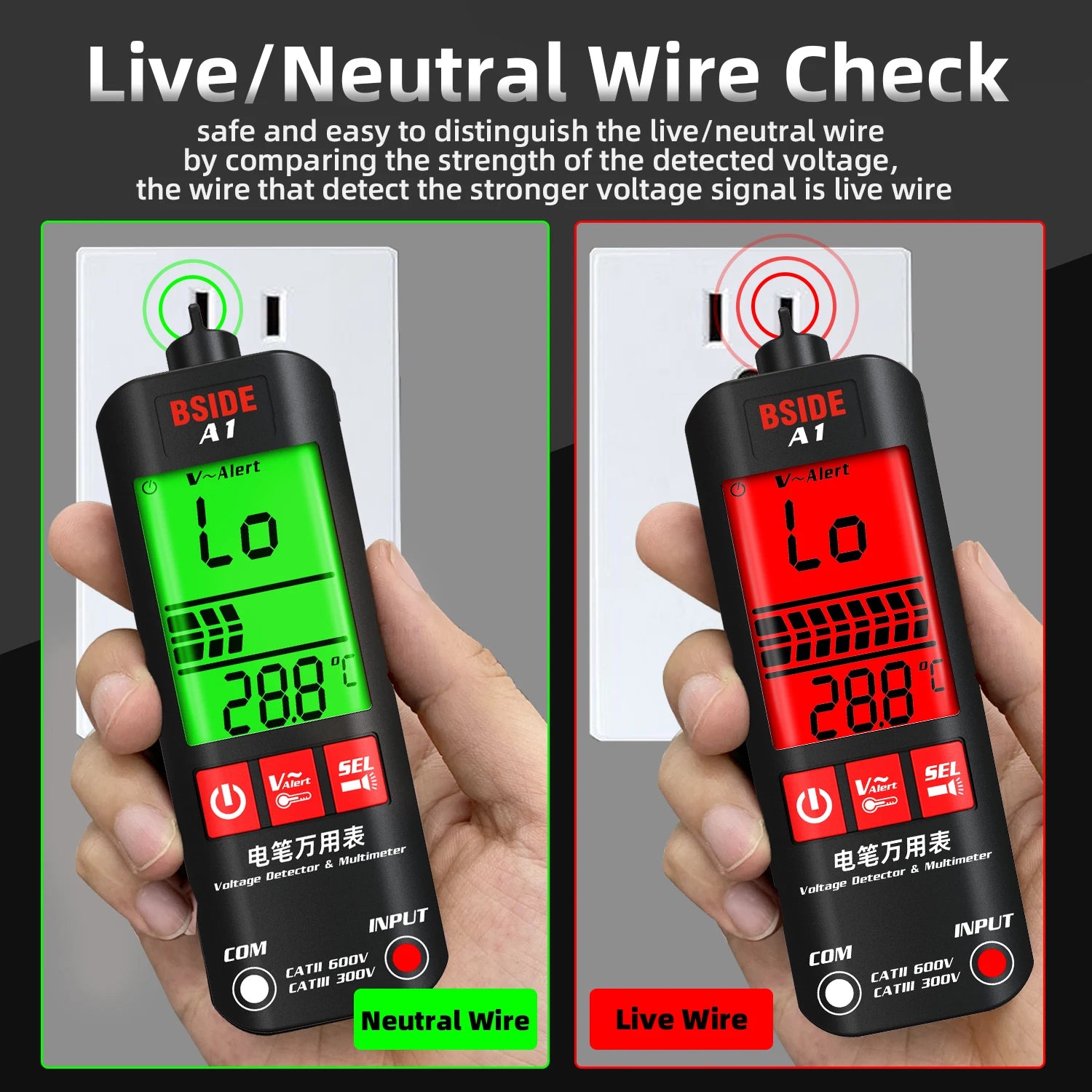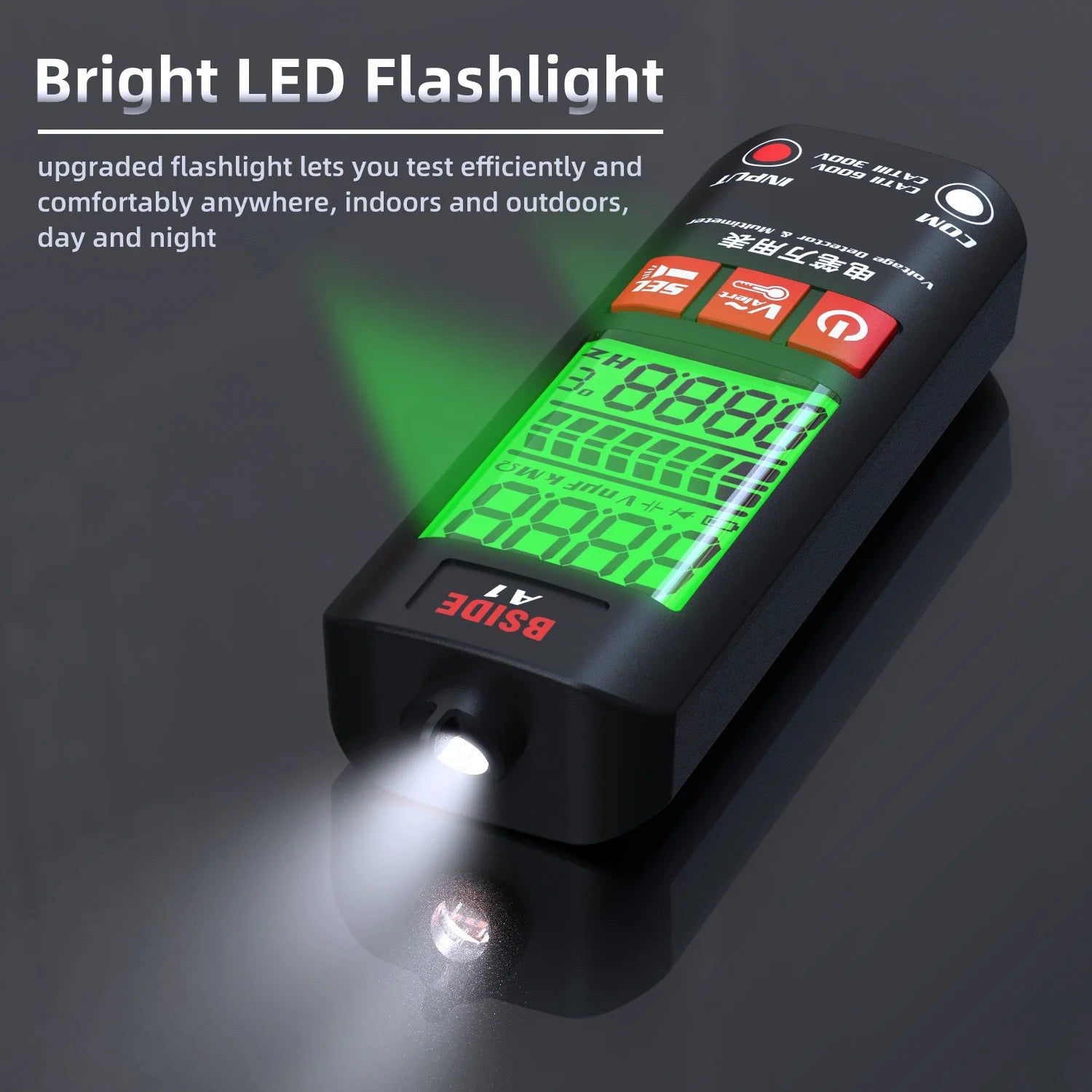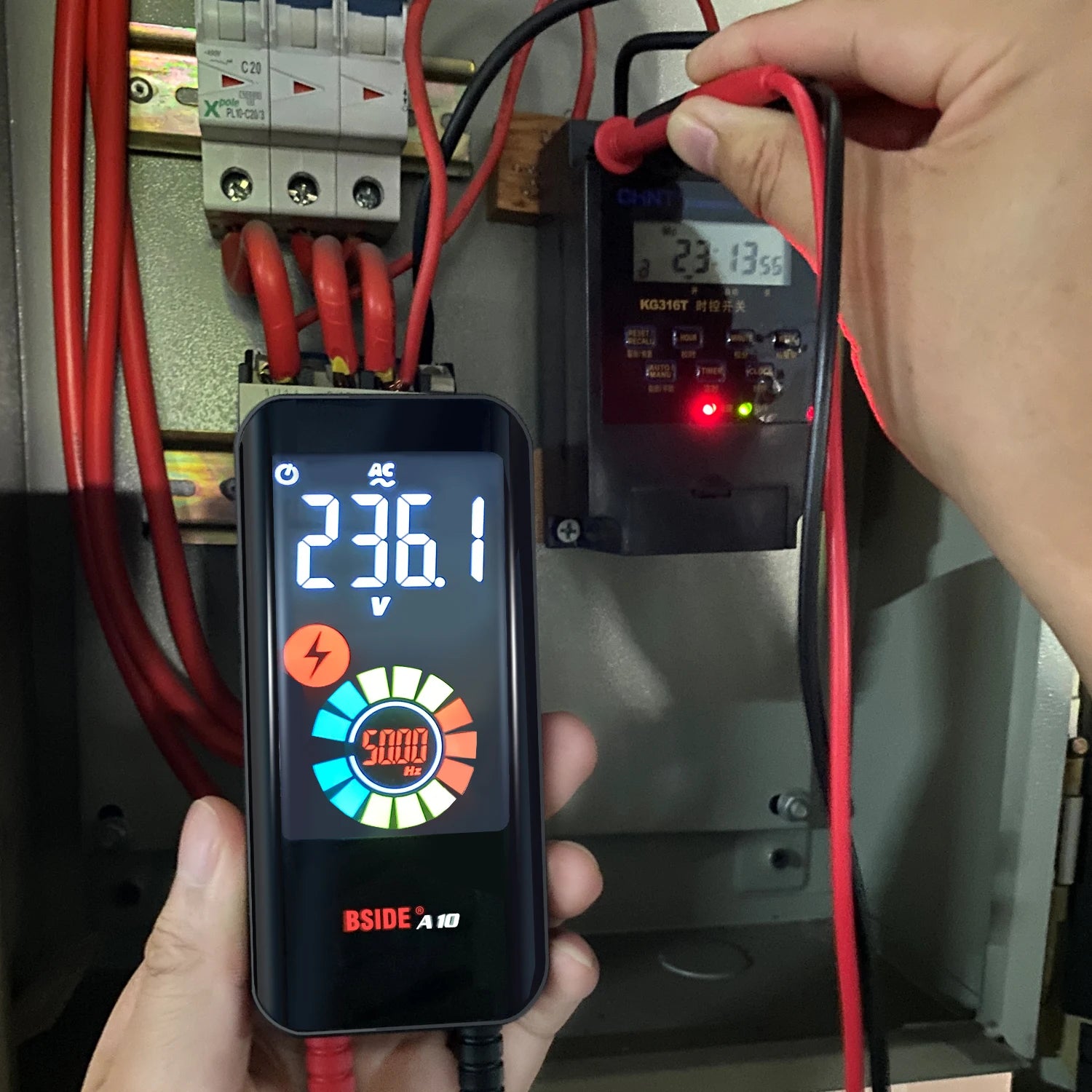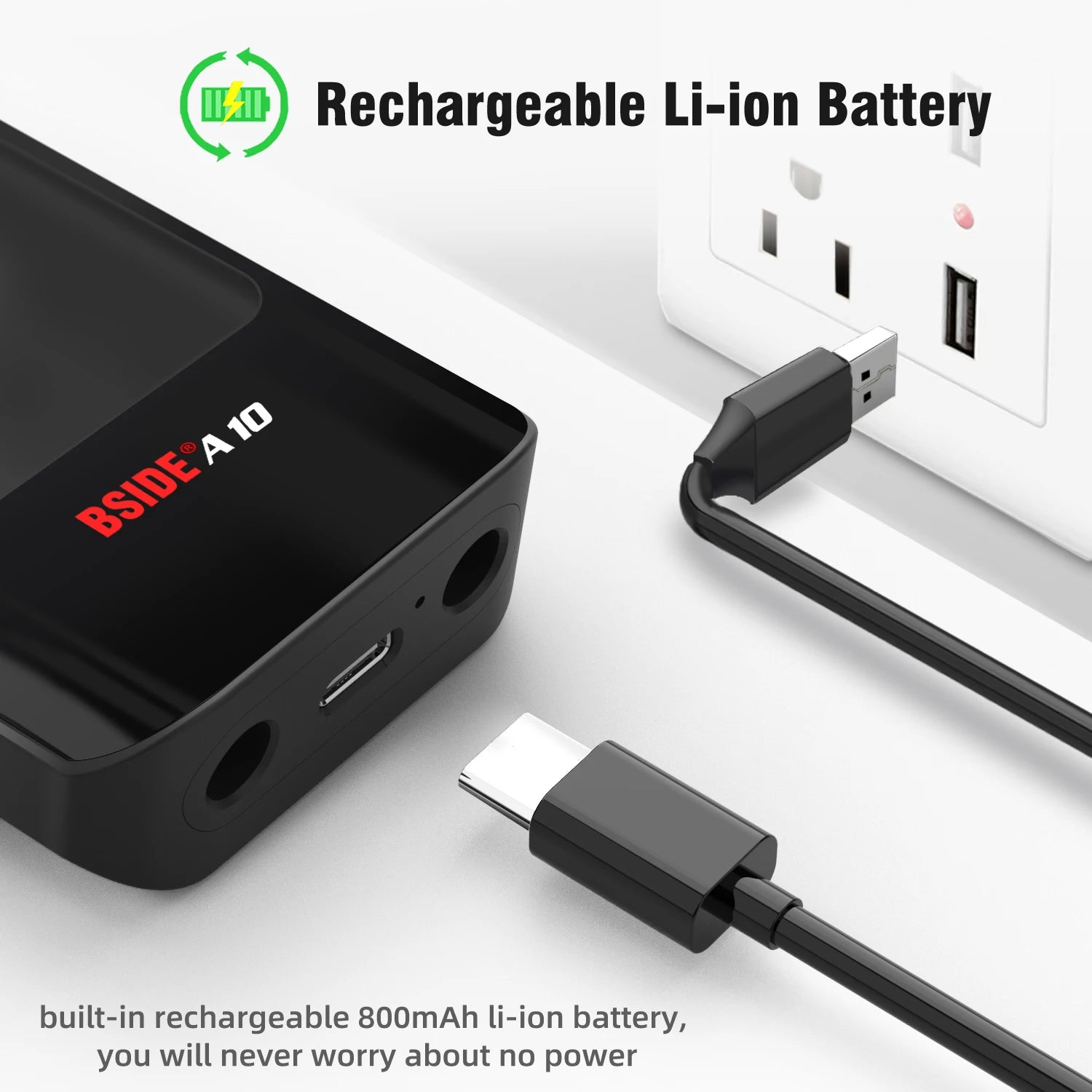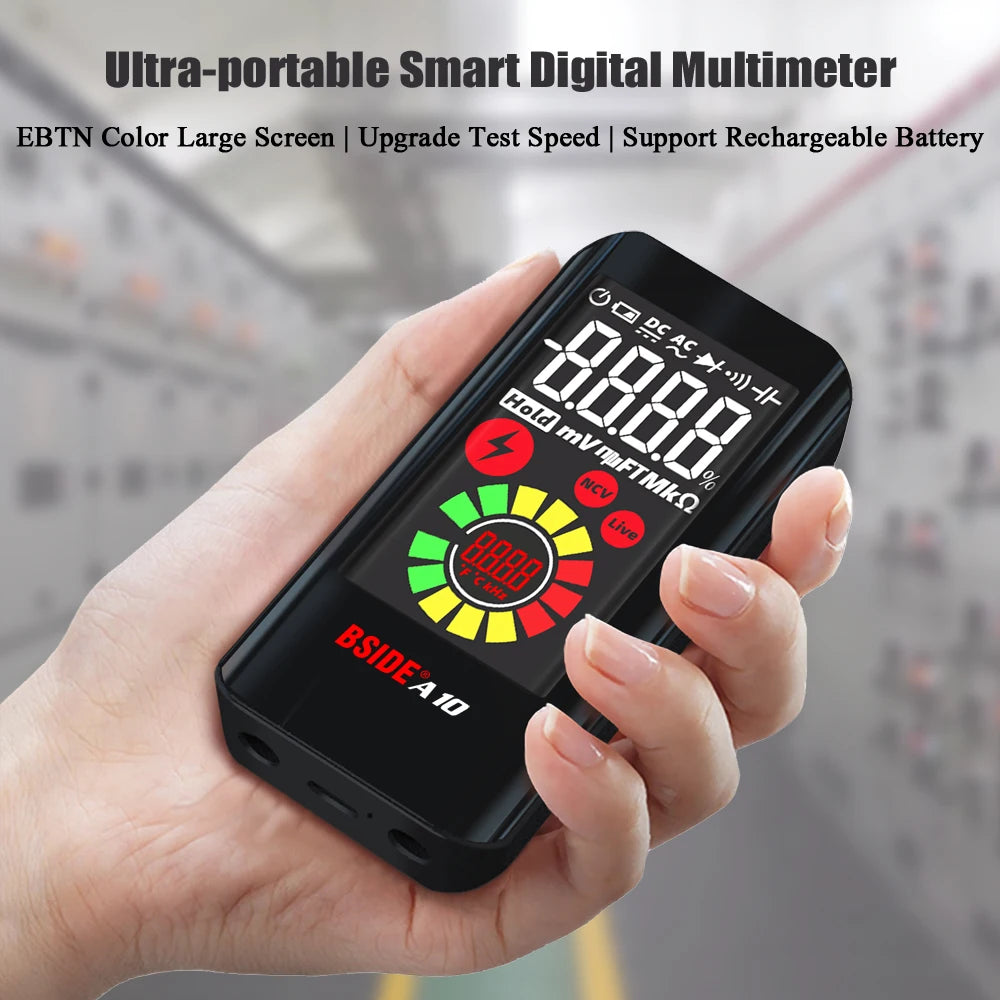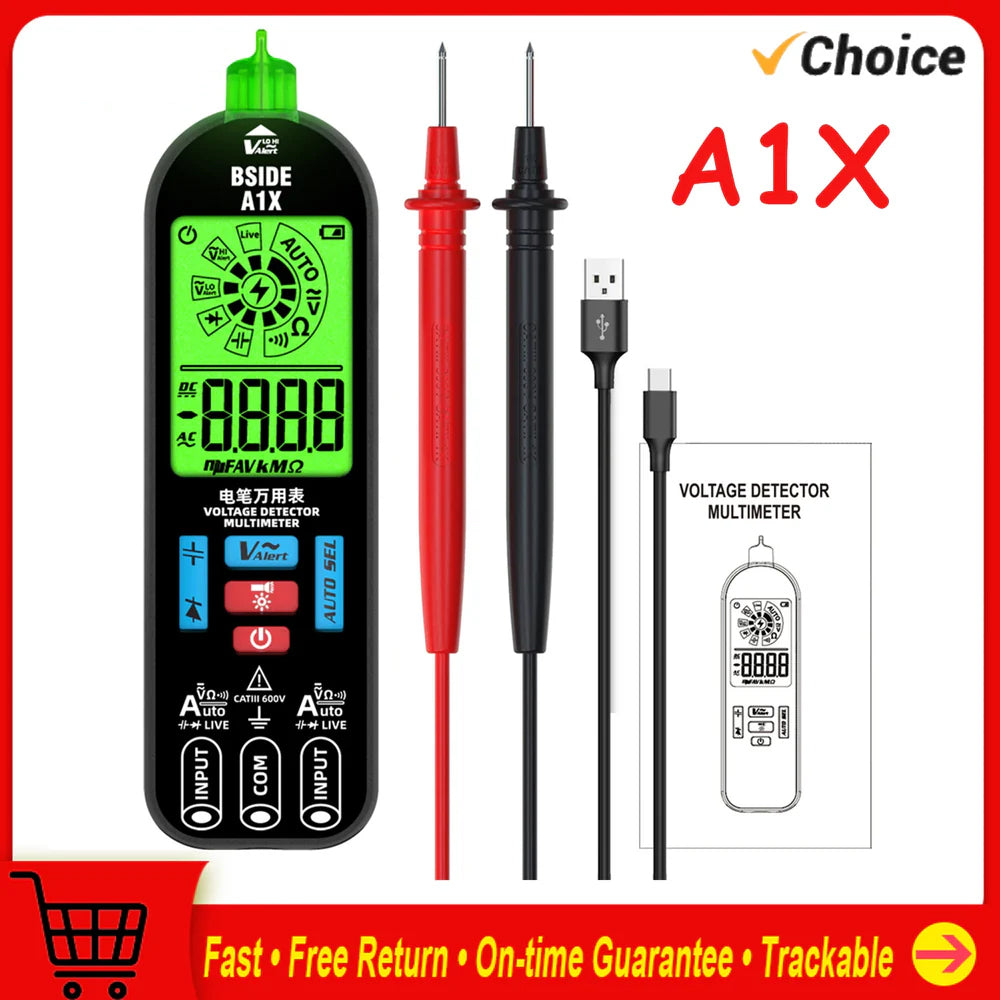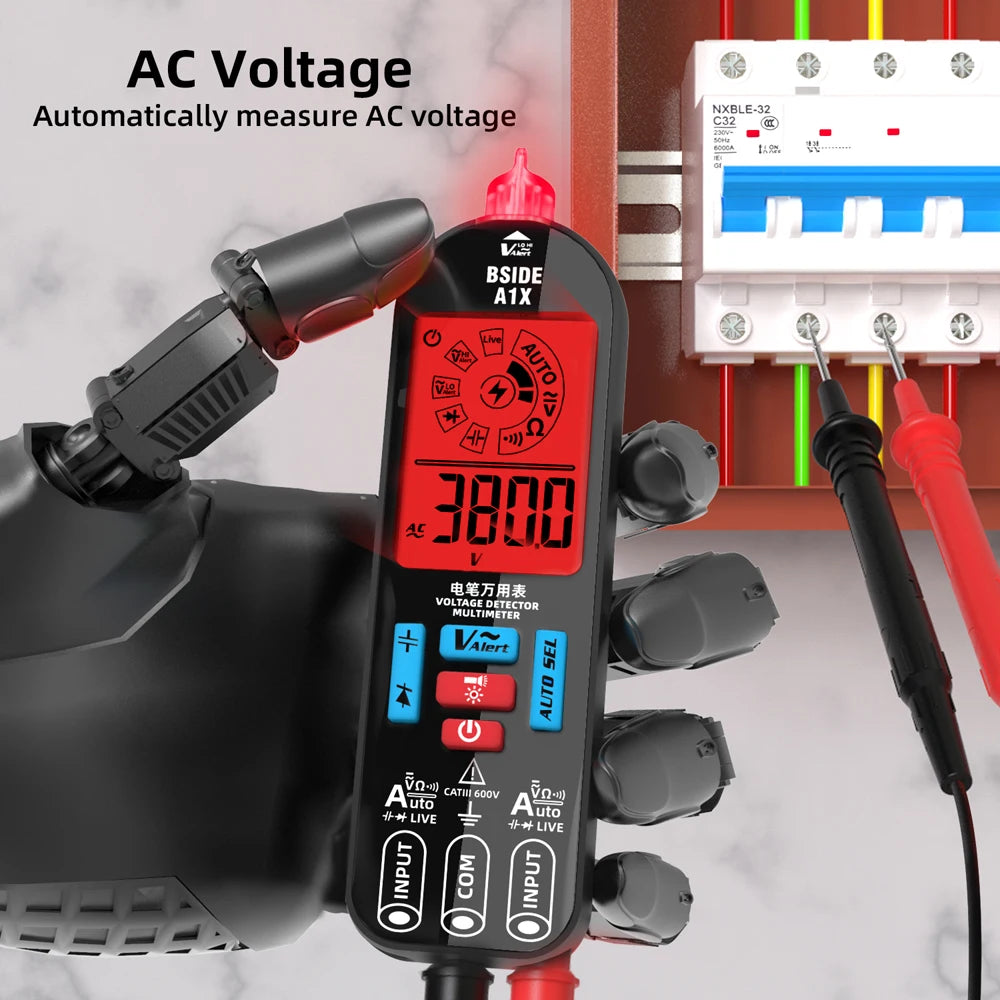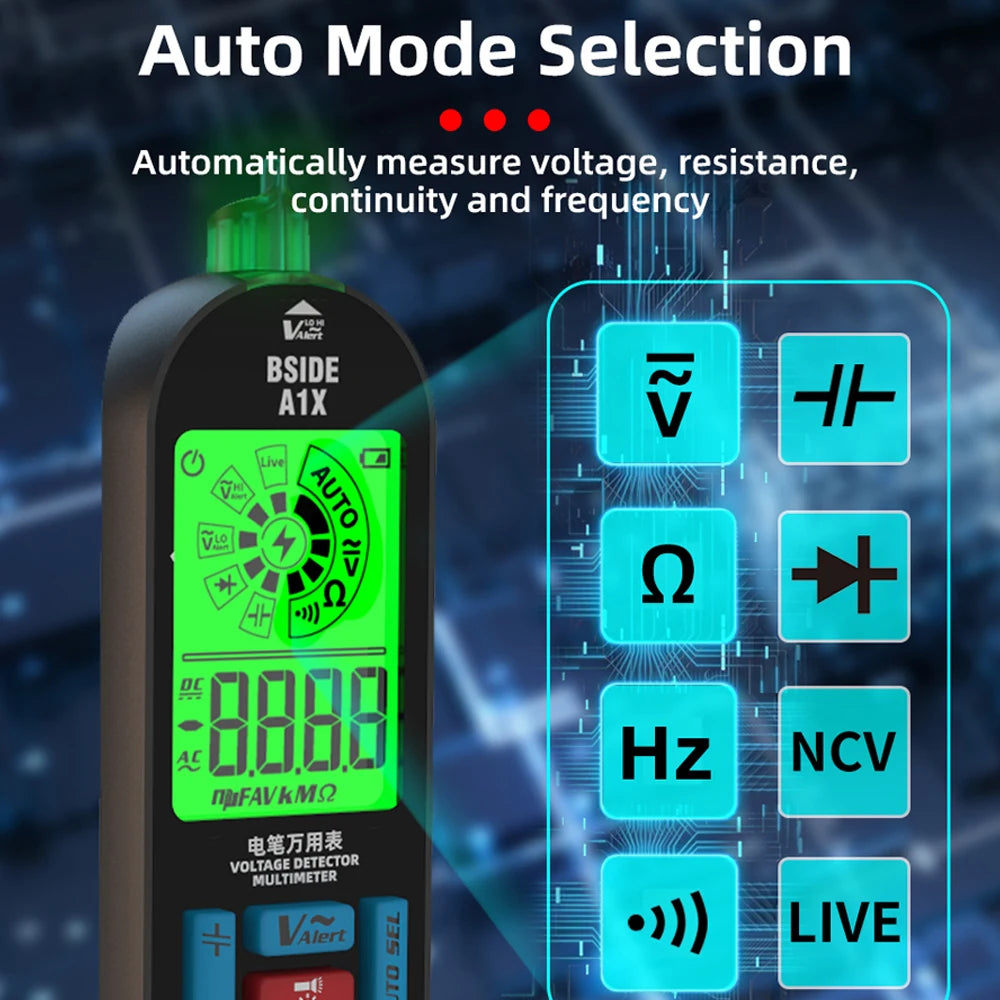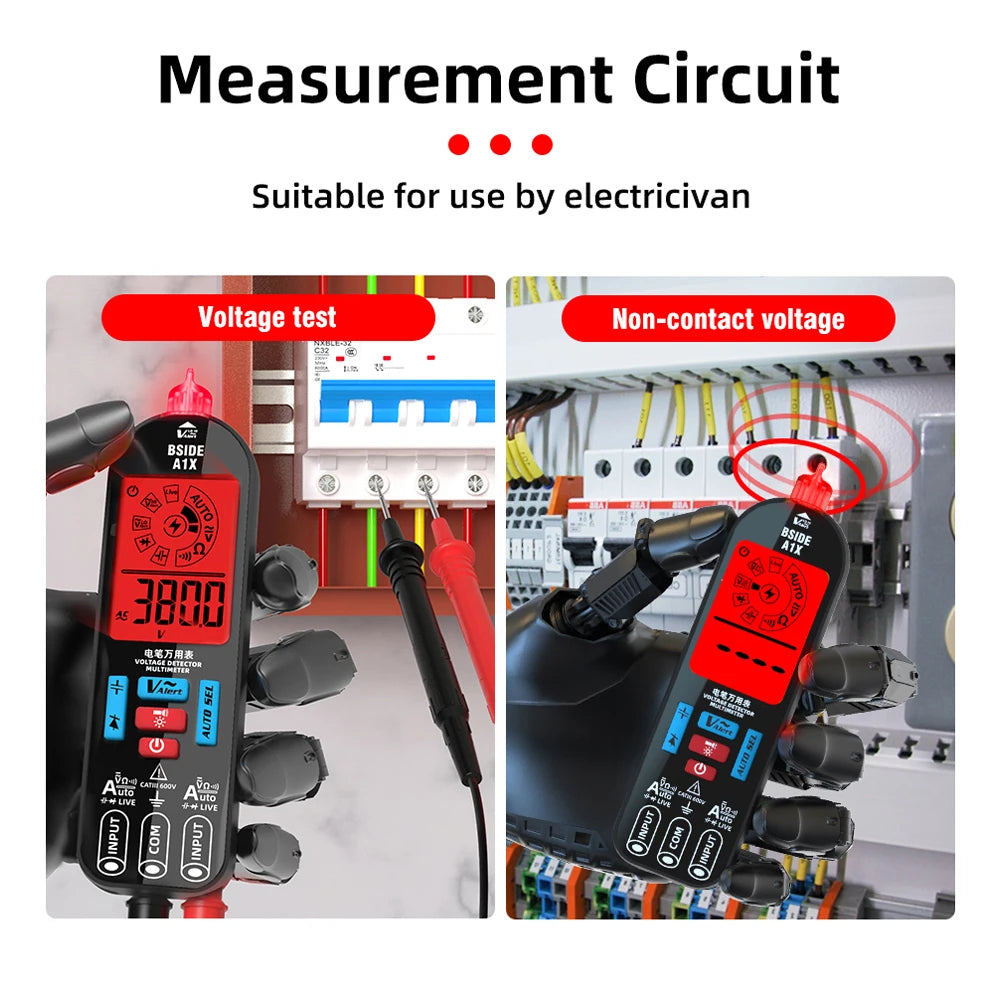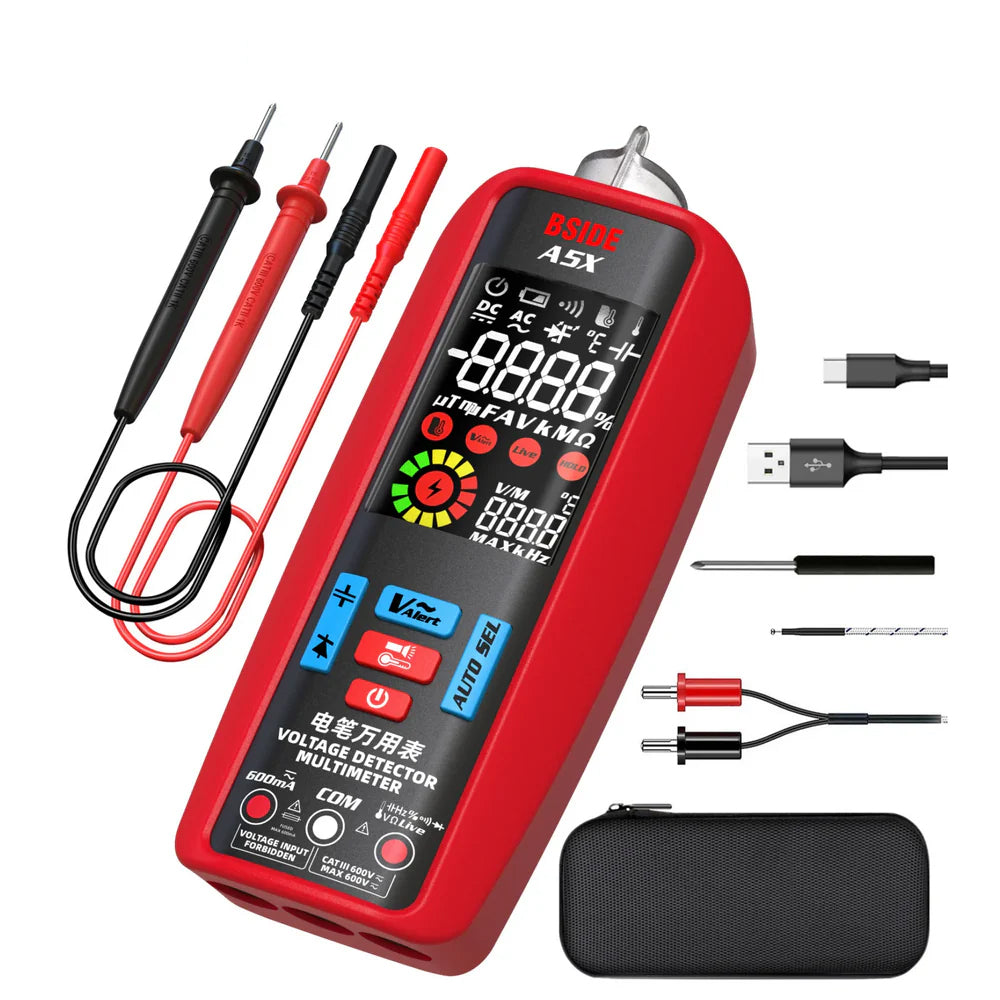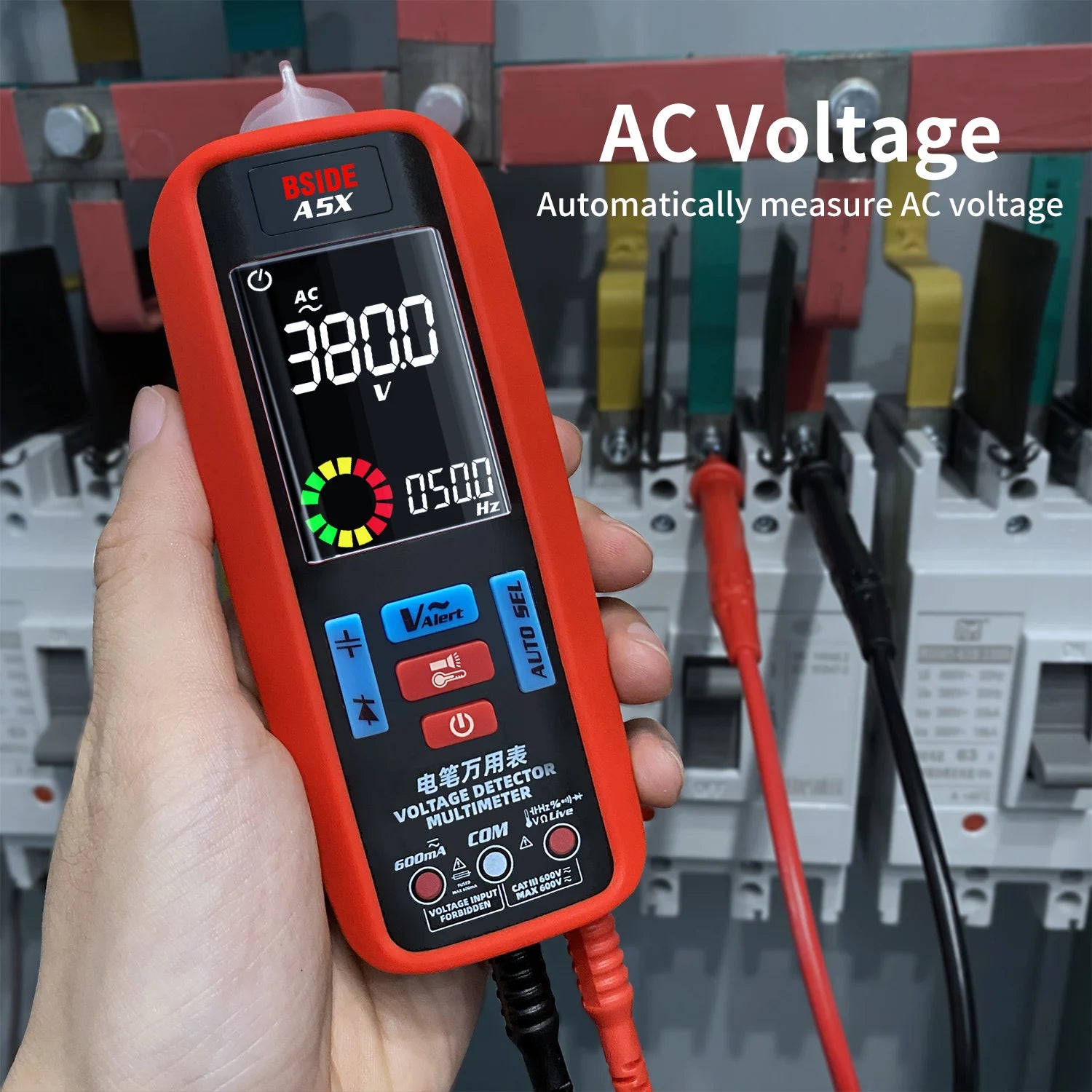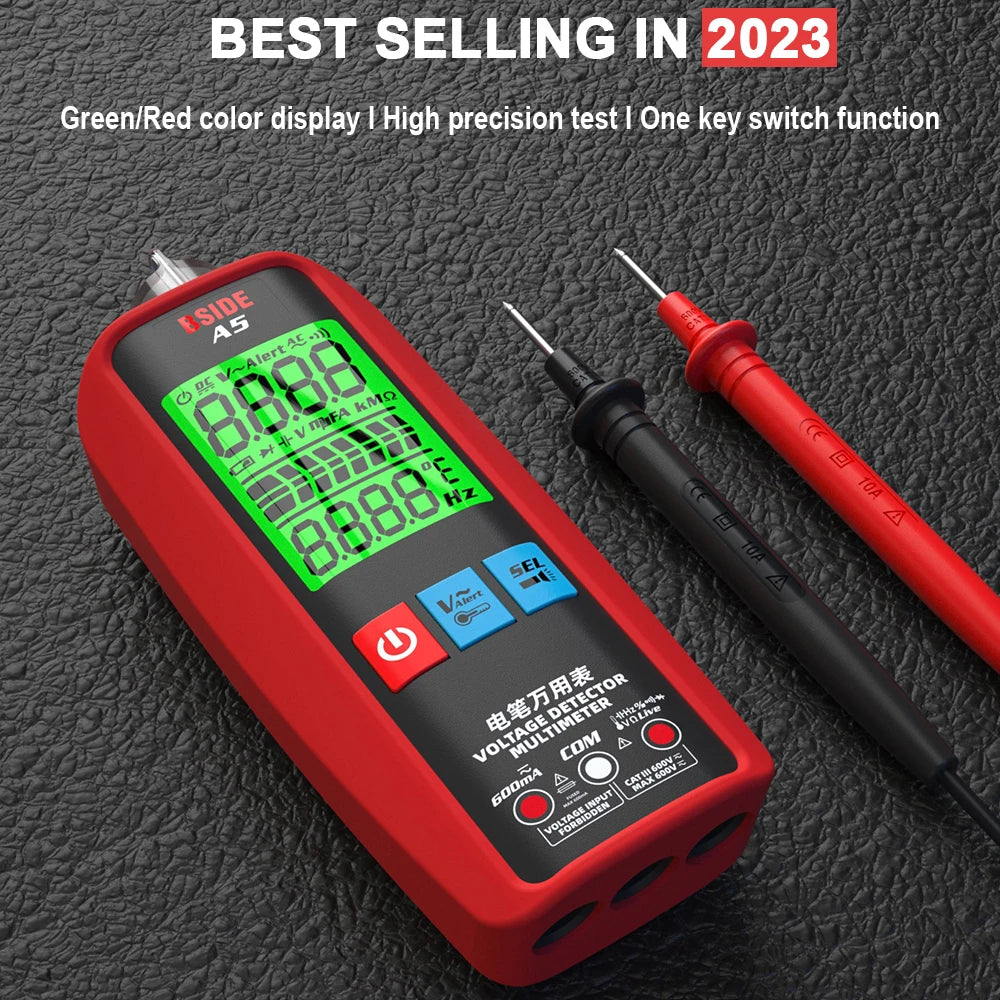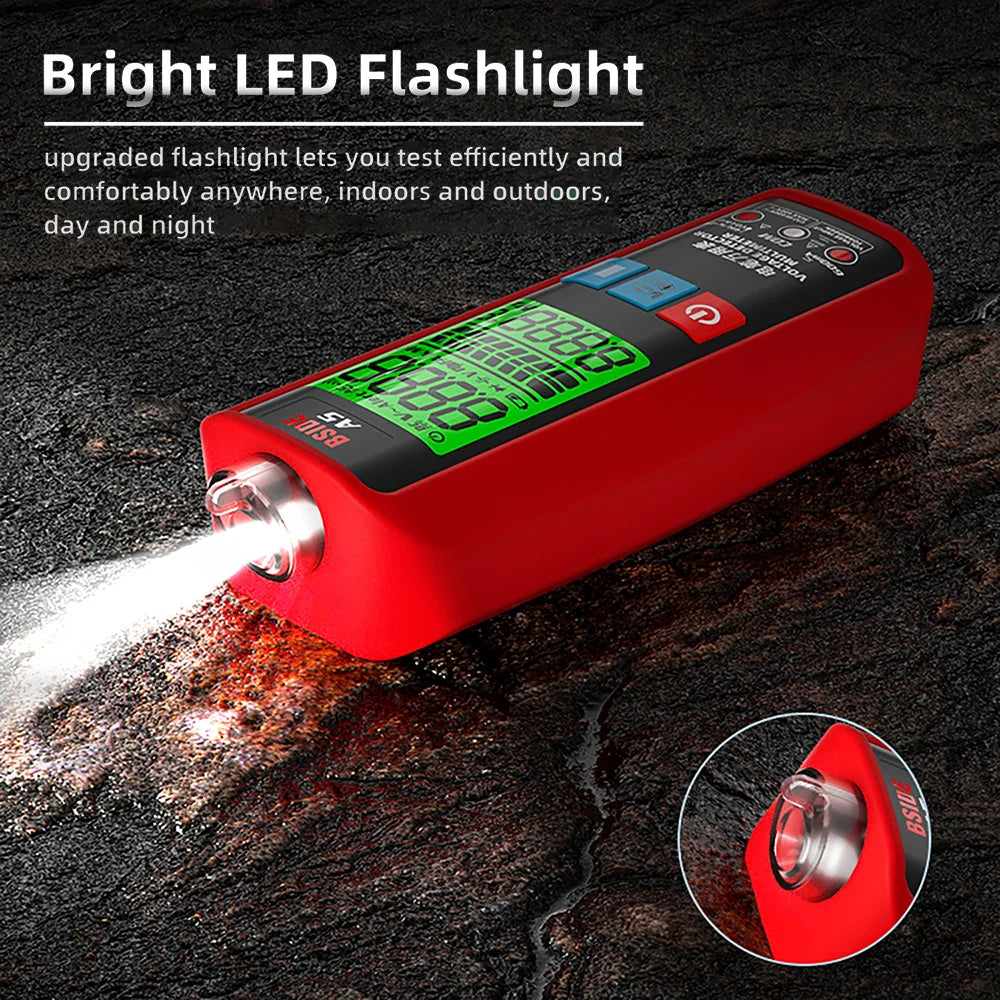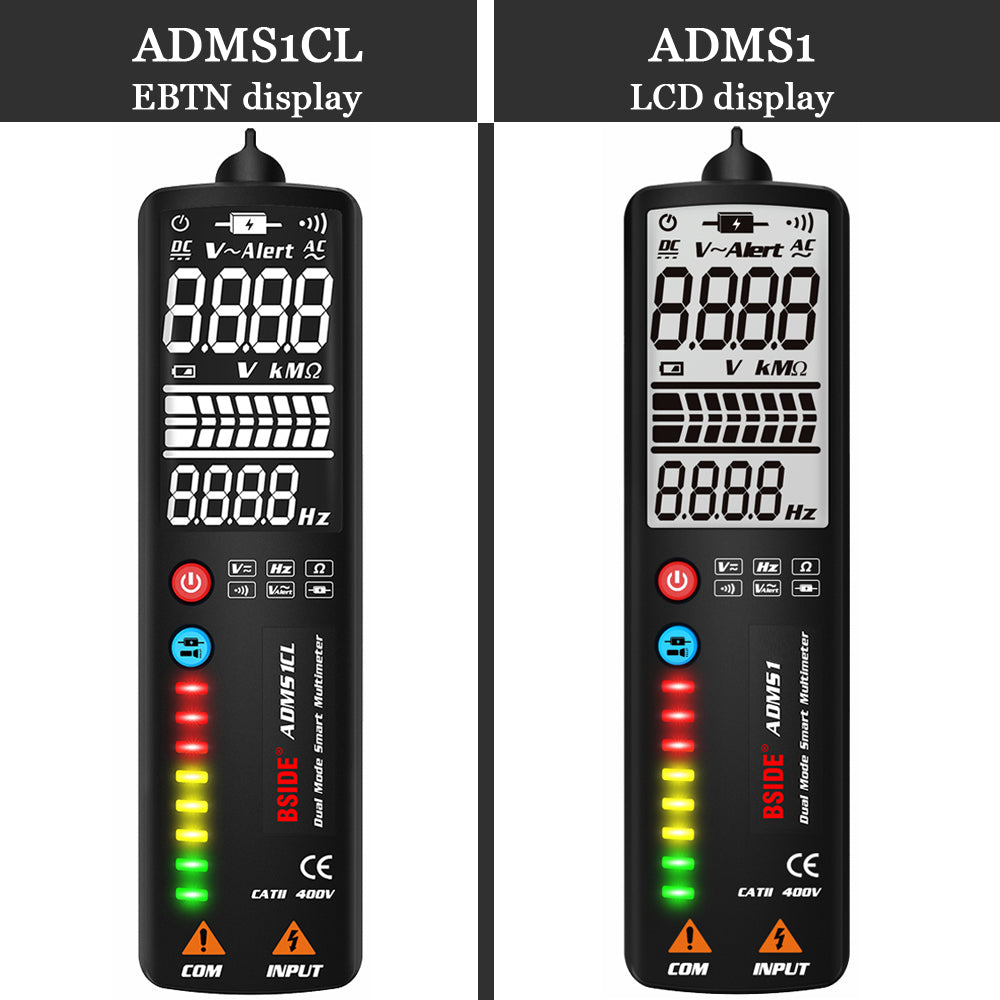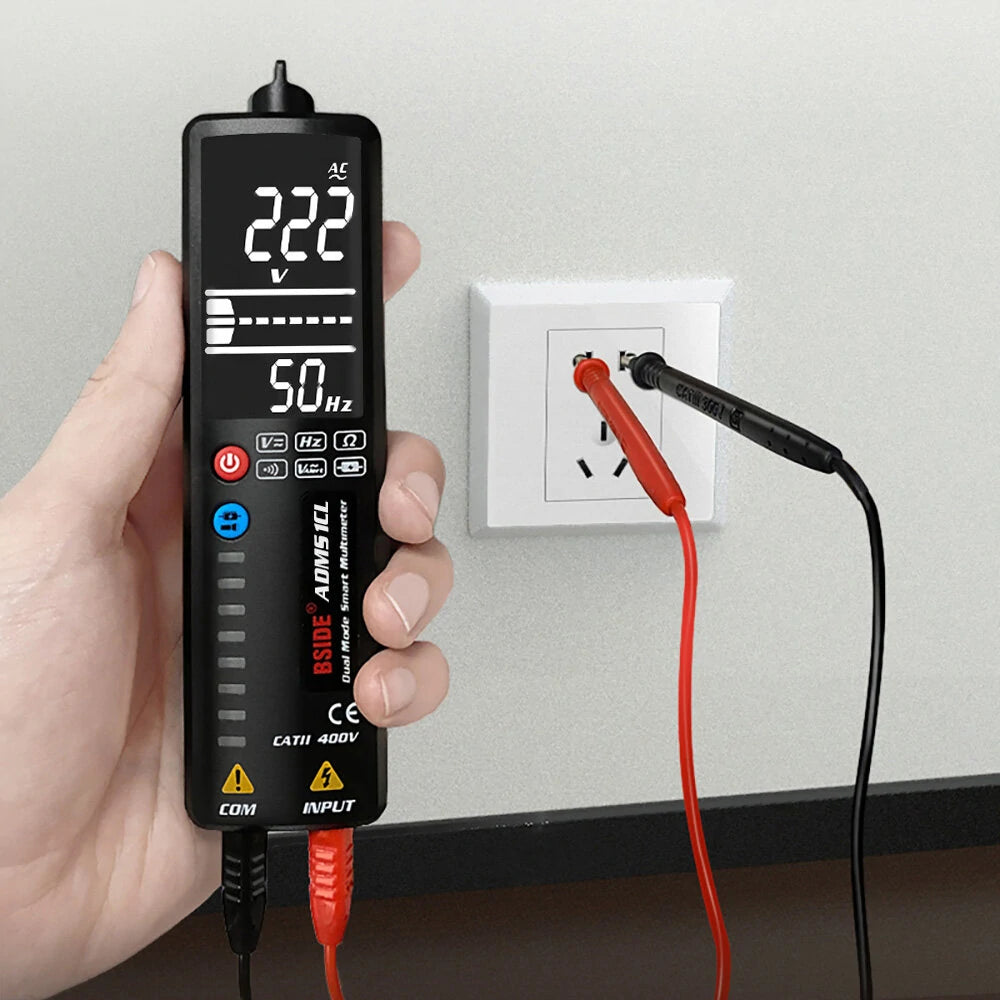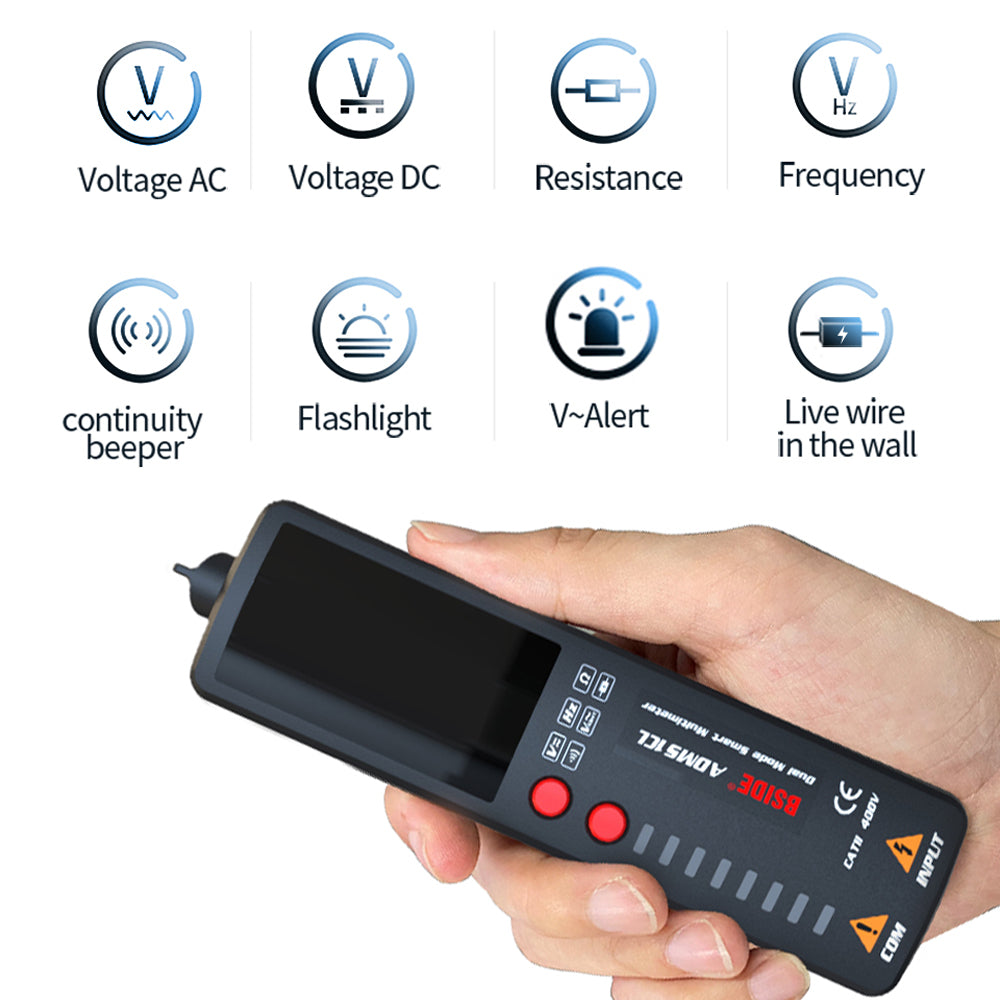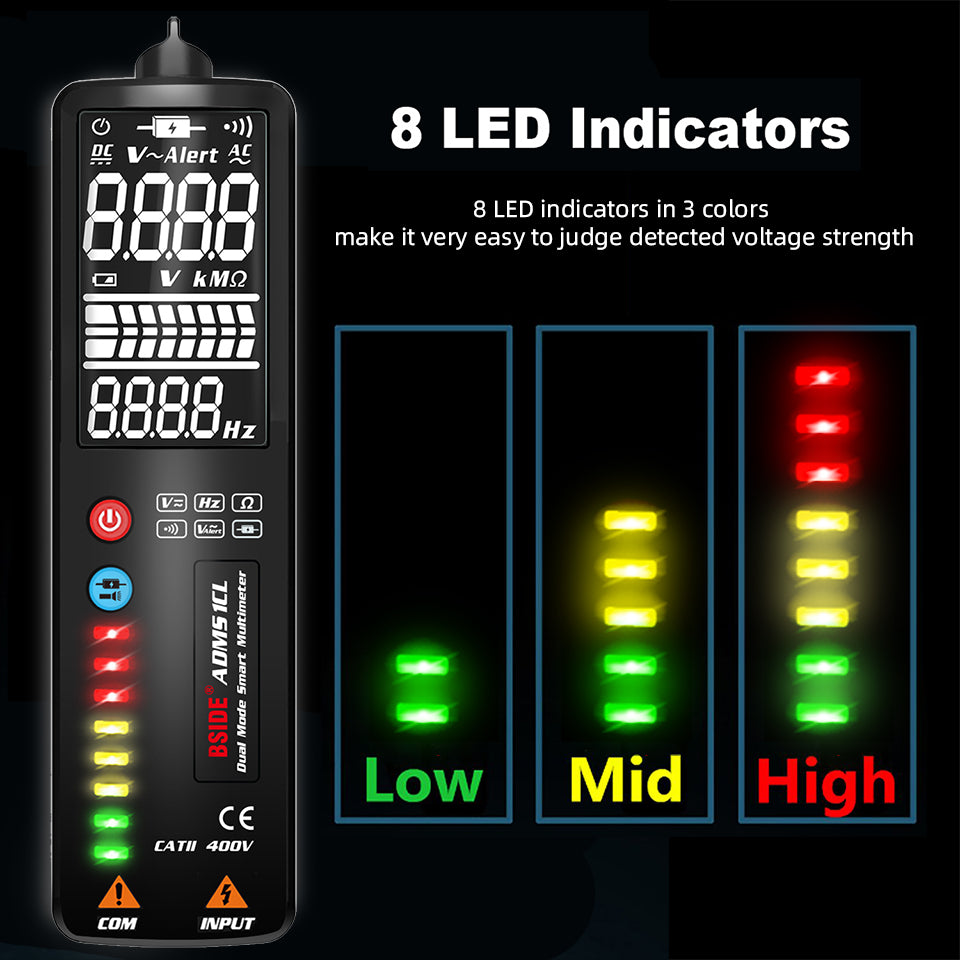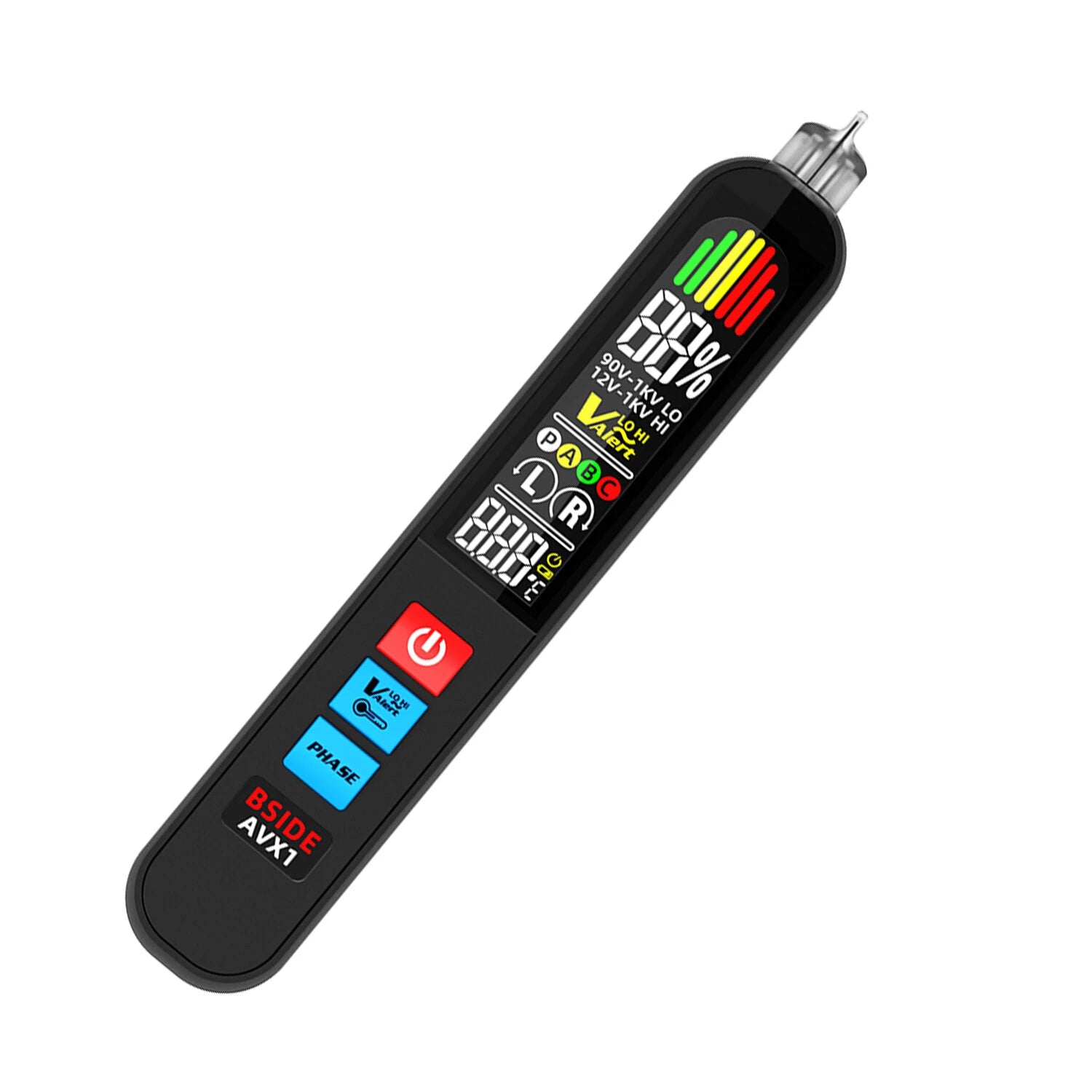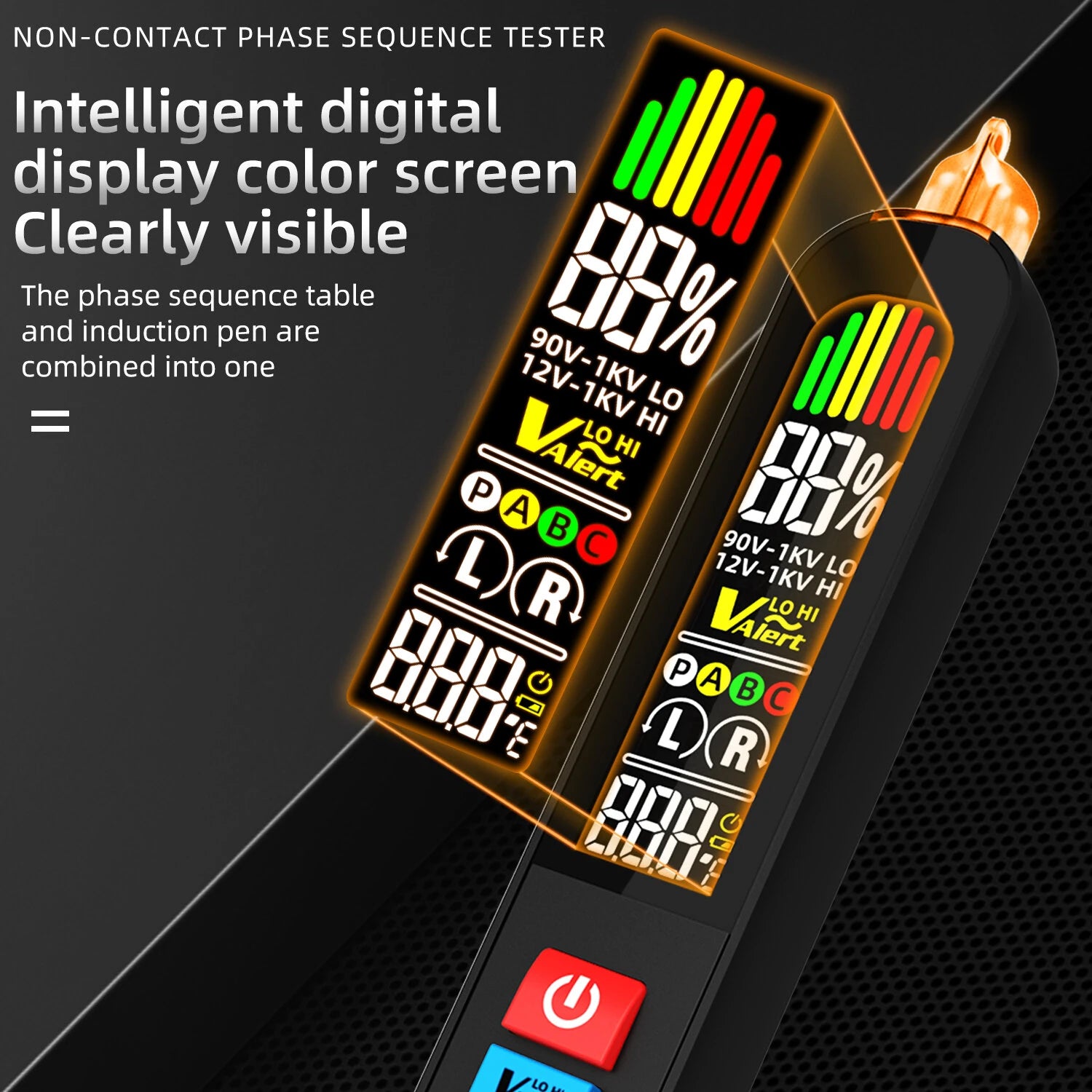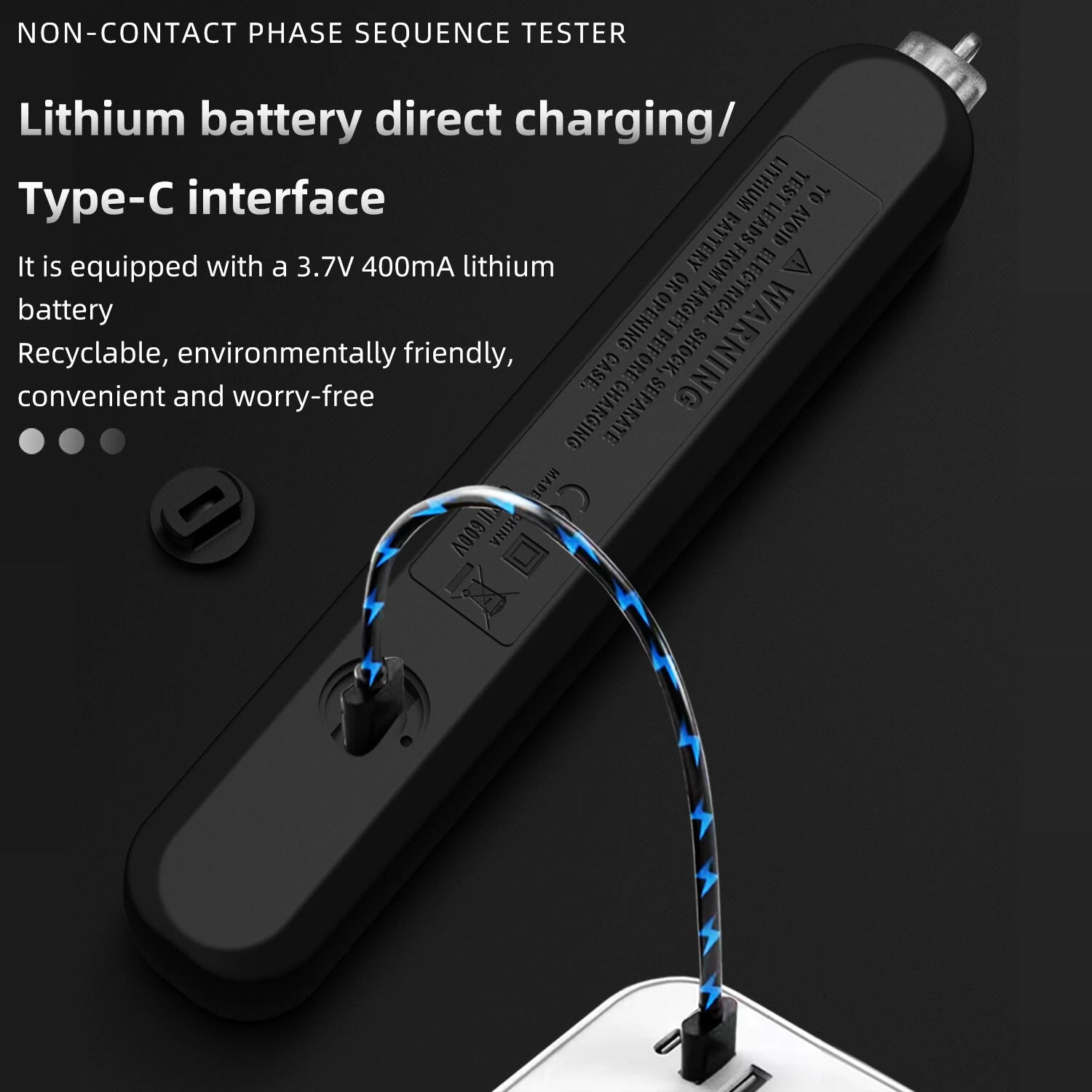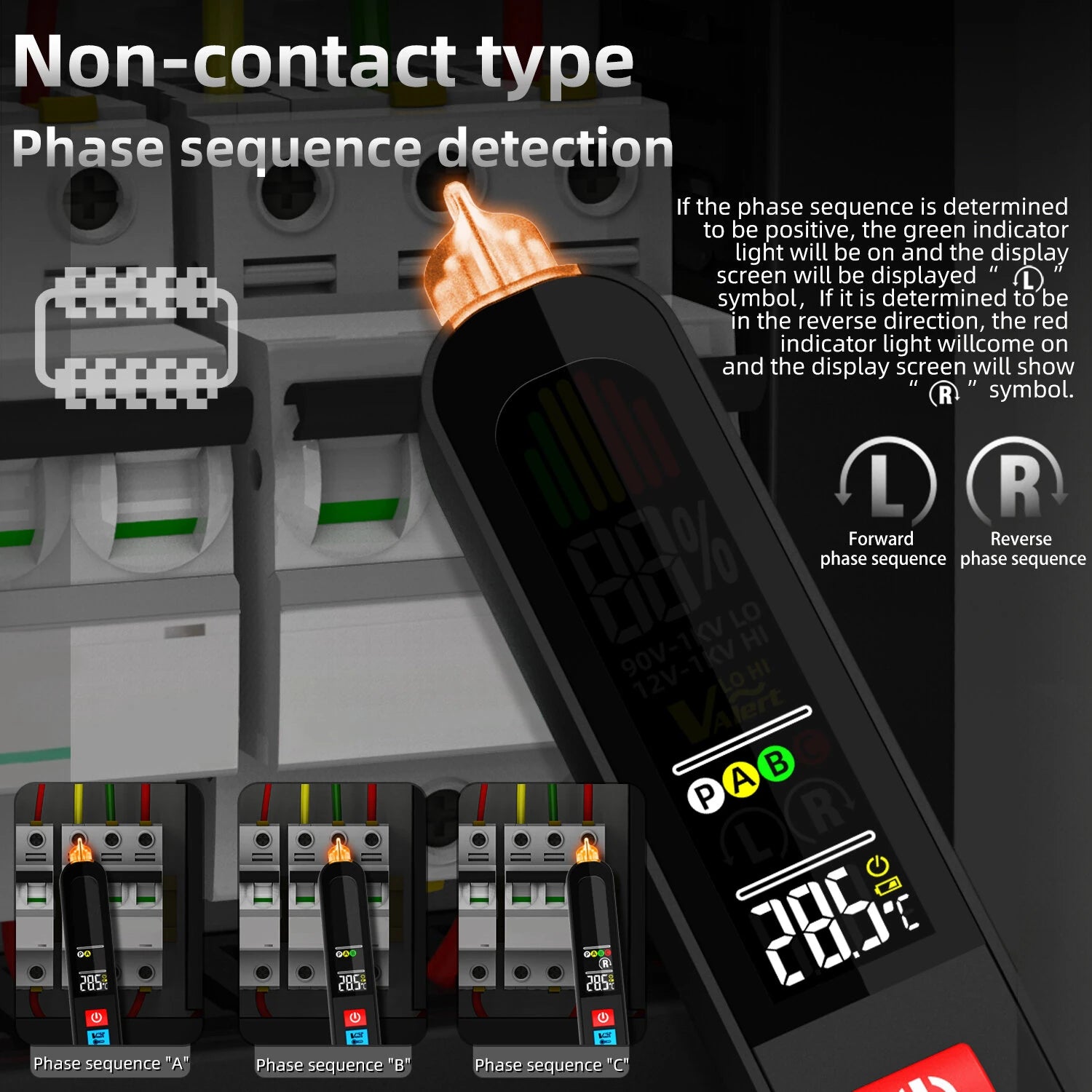📱 Why You Should Test USB Chargers
Not all chargers are created equal. Faulty or poorly made USB chargers can cause:
-
Overheating 🔥
-
Battery damage 🔋
-
Device malfunction 📴
-
Fire hazards 🚫
Testing your charger’s voltage and current output can help you determine:
-
Is it safe to use?
-
Is it delivering the correct power?
-
Is your device charging efficiently?
Let’s learn how to check it with a multimeter.
🧰 What You’ll Need
-
A digital multimeter (e.g., BSIDE S11, SH7, or S30)
-
A USB load tester OR a USB breakout board (for safe probing)
-
Your USB charger + cable
-
Optional: a device for real-load test (e.g., smartphone)
⚠️ Safety Tips
-
Never short the USB terminals
-
Avoid touching metal tips while connected
-
Use USB testing boards if possible to avoid damaging ports
🧪 Step-by-Step: Test USB Output with a Multimeter
🔋 Step 1: Set Your Multimeter to DC Voltage Mode
-
Turn the dial to DC Voltage (V⎓)
-
If using a manual meter, select the 20V range
🧷 Step 2: Connect Your USB Charger
-
Plug the charger into a power outlet
-
Insert a USB cable
-
Expose the wires (or use a USB breakout board)
USB color coding (typical):
-
Red = +5V
-
Black = Ground
-
White/Green = Data lines (not used here)
📏 Step 3: Measure Voltage
-
Touch the red probe to the red wire (+5V)
-
Touch the black probe to the black wire (GND)
-
Check your multimeter reading:
| Voltage Reading | Meaning |
|---|---|
| 4.75–5.25V | ✅ Normal USB output |
| >5.25V | ⚠️ Potential overvoltage – risky for devices |
| <4.75V | ⚠️ Weak or unstable output |
🔌 Step 4: Measure Current (Optional)
To check current (amperage), you need a USB load tester or connect the multimeter in series—which is not beginner-friendly.
An easier solution:
-
Use a USB power meter that displays current & voltage (you can promote this as an accessory too!)
📊 Bonus: Compare With Other Chargers
Test different chargers with the same method to compare:
-
Fast chargers (5V/2A, 9V/2A, 12V/1.5A)
-
Older/cheap chargers (5V/0.5A)
You’ll see that high-quality chargers maintain stable voltage under load, while cheaper ones drop quickly or spike dangerously.
🧰 Why Use a BSIDE Multimeter?
BSIDE multimeters like S30 or SH7 offer:
-
Auto-ranging DC voltage mode
-
Dual display (for faster comparison)
-
Portable, accurate, beginner-friendly
-
Budget-friendly tools for everyday use
✅ Conclusion
Testing your USB charger’s output with a digital multimeter is a fast, reliable way to check safety and performance. If your voltage is too low or too high, it's time to replace your charger—before it harms your device.

